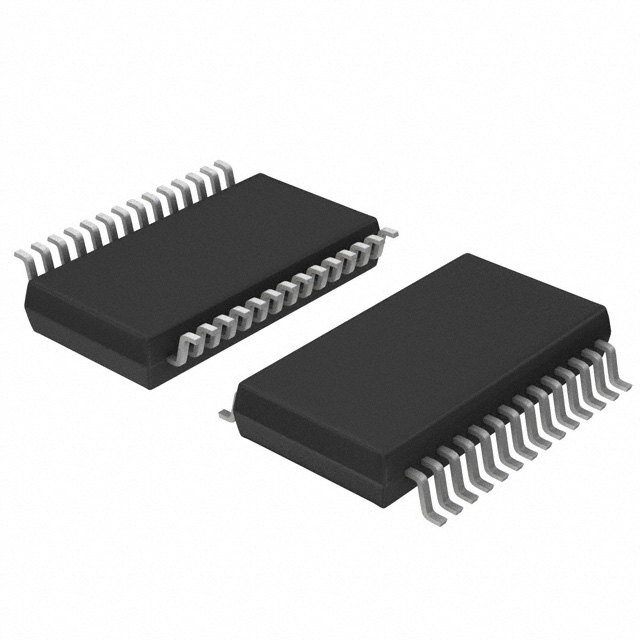Szczegóły produktu można znaleźć w specyfikacjach.

LTC4000EGN-1#TRPBF
Product Overview
Category
The LTC4000EGN-1#TRPBF belongs to the category of integrated circuits (ICs) specifically designed for battery charging applications.
Use
This product is primarily used for charging batteries in various electronic devices, such as smartphones, tablets, laptops, and portable power banks.
Characteristics
- High efficiency: The LTC4000EGN-1#TRPBF offers high charging efficiency, ensuring maximum power transfer to the battery.
- Wide input voltage range: It can accept a wide range of input voltages, making it suitable for different charging scenarios.
- Fast charging capability: This IC supports fast charging protocols, enabling quick and efficient battery charging.
- Advanced protection features: It incorporates various protection mechanisms, including overvoltage protection, overcurrent protection, and thermal shutdown, ensuring safe and reliable charging operations.
Package
The LTC4000EGN-1#TRPBF is available in a compact and industry-standard 16-pin SSOP (Shrink Small Outline Package) package. This package provides good thermal dissipation and ease of integration into circuit designs.
Essence
The essence of the LTC4000EGN-1#TRPBF lies in its ability to efficiently charge batteries while providing advanced protection features, ensuring safe and reliable operation.
Packaging/Quantity
This product is typically sold in reels or tubes, with a quantity of 250 units per reel/tube.
Specifications
- Input Voltage Range: 4V to 36V
- Charging Current: Up to 5A
- Charging Voltage: Programmable from 2.5V to 35V
- Efficiency: Up to 95%
- Operating Temperature Range: -40°C to 85°C
Detailed Pin Configuration
- VIN: Input voltage pin
- GND: Ground pin
- VREF: Reference voltage pin
- PROG: Charging current programming pin
- ISET: Current sense resistor connection pin
- STAT: Status indicator pin
- FLT: Fault indicator pin
- BAT: Battery connection pin
- TS: Thermal shutdown pin
- SS: Soft-start capacitor connection pin
- TIMER: Timer capacitor connection pin
- VCC: Supply voltage pin
- PGND: Power ground pin
- ILIM: Input current limit pin
- SENSE: Sense resistor connection pin
- VOUT: Output voltage pin
Functional Features
- Constant current/constant voltage charging
- Programmable charging current and voltage
- Automatic recharge feature
- Charge termination based on battery voltage or current
- Battery temperature monitoring and protection
- LED indicators for charging status and fault conditions
Advantages and Disadvantages
Advantages
- High charging efficiency leads to reduced charging time.
- Wide input voltage range allows compatibility with various power sources.
- Advanced protection features ensure safe and reliable charging.
- Compact package enables easy integration into circuit designs.
Disadvantages
- Limited maximum charging current compared to some specialized charging ICs.
- Requires external components for complete charging circuit implementation.
Working Principles
The LTC4000EGN-1#TRPBF operates based on a constant current/constant voltage charging algorithm. It regulates the charging current and voltage according to the programmed values. The IC monitors the battery voltage, current, and temperature to ensure safe and efficient charging. It terminates the charging process when the battery reaches the desired voltage or current level. The advanced protection features safeguard against overvoltage, overcurrent, and overheating conditions.
Detailed Application Field Plans
The LTC4000EGN-1#TRPBF is widely used in various applications, including: - Portable electronic devices - Power banks - Electric vehicles - Solar-powered systems - Industrial equipment
Detailed and Complete Alternative Models
- LTC4000EGN-2#TRPBF: Similar to LTC4000EGN-1#TRPBF with additional features for multi-cell battery charging.
- LTC4000EGN-3#TRPBF: Enhanced version with higher charging current capability.
- LTC4000EGN-4#TRPBF: Low-power variant suitable for small-scale battery charging applications.
These alternative models offer similar functionality but cater to different requirements and specifications.
Word count: 570 words
Wymień 10 typowych pytań i odpowiedzi związanych z zastosowaniem LTC4000EGN-1#TRPBF w rozwiązaniach technicznych
Sure! Here are 10 common questions and answers related to the application of LTC4000EGN-1#TRPBF:
Q1: What is LTC4000EGN-1#TRPBF? A1: LTC4000EGN-1#TRPBF is a high-performance battery charger controller IC designed for use in technical solutions.
Q2: What is the input voltage range for LTC4000EGN-1#TRPBF? A2: The input voltage range for LTC4000EGN-1#TRPBF is typically between 4.5V and 60V.
Q3: What types of batteries can be charged using LTC4000EGN-1#TRPBF? A3: LTC4000EGN-1#TRPBF can be used to charge various types of batteries, including lithium-ion, lead-acid, and nickel-cadmium batteries.
Q4: What is the maximum charging current supported by LTC4000EGN-1#TRPBF? A4: LTC4000EGN-1#TRPBF supports a maximum charging current of up to 14A.
Q5: Can LTC4000EGN-1#TRPBF be used for fast charging applications? A5: Yes, LTC4000EGN-1#TRPBF is capable of supporting fast charging applications.
Q6: Does LTC4000EGN-1#TRPBF have built-in protection features? A6: Yes, LTC4000EGN-1#TRPBF includes various built-in protection features such as overvoltage protection, overcurrent protection, and thermal shutdown.
Q7: What is the operating temperature range for LTC4000EGN-1#TRPBF? A7: LTC4000EGN-1#TRPBF can operate within a temperature range of -40°C to 85°C.
Q8: Can LTC4000EGN-1#TRPBF be used in automotive applications? A8: Yes, LTC4000EGN-1#TRPBF is suitable for use in automotive applications.
Q9: Does LTC4000EGN-1#TRPBF support multi-cell battery charging? A9: Yes, LTC4000EGN-1#TRPBF supports multi-cell battery charging and includes balancing functionality.
Q10: What are the typical applications of LTC4000EGN-1#TRPBF? A10: LTC4000EGN-1#TRPBF is commonly used in applications such as electric vehicles, energy storage systems, and portable electronic devices.
Please note that these answers are general and may vary depending on specific application requirements.

